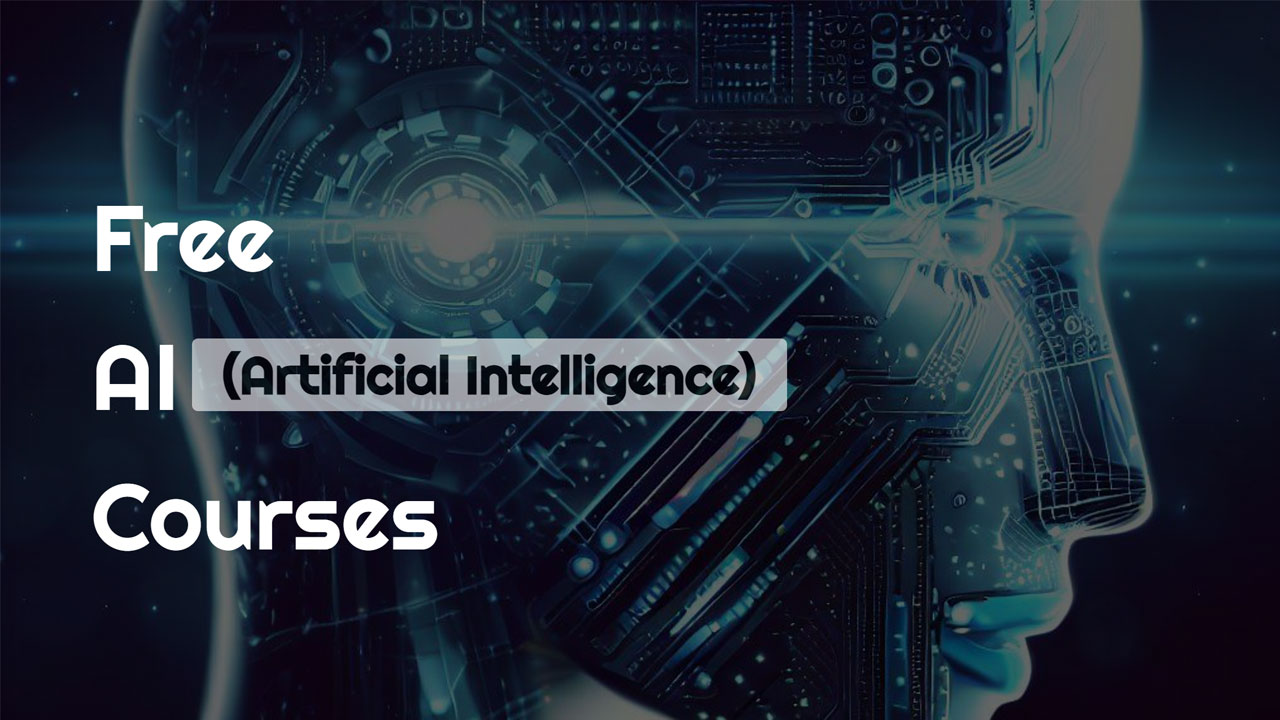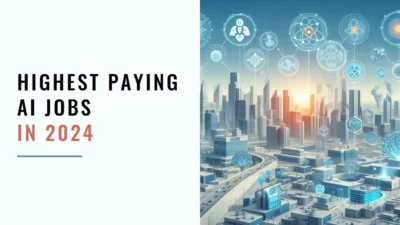
AI courses have started to evolve and there are tons of courses which teaches you how to use AI tools, like there are many courses which teaches how to use ChatGPT more effectively, efficiently and get the best output. But, the programmers, developers and engineers are now looking for the courses which teaches the AI itself. Many courses are available to teach how AI works and how one can develop their own version of AI tool.
- 1 List of Free AI Courses by Google
- 1.1 1. Introduction to Generative AI
- 1.2 2. Introduction to Large Language Models
- 1.3 3. Introduction to Responsible AI
- 1.4 4. Generative AI Fundamentals
- 1.5 5. Introduction to Image Generation
- 1.6 6. Encoder-Decoder Architecture
- 1.7 7. Attention Mechanism
- 1.8 8. Transformer Models and BERT Model
- 1.9 9. Create Image Captioning Models
- 1.10 10. Introduction to Generative AI Studio
- 2 Why one Need to Learn AI
- 2.1 Here are some of the best resources for learning AI:
- 2.2 How AI is Changing the world
Recently we have compiled a list of best AI tools for education being used by students, teachers, education institutions and businesses in the field of education. There are hundreds of AI tools already available for different uses case, i.e. for photographers, videographers, programmers etc. You too can create your own version of Artificial intelligence tool after taking AI courses.
So, here we bring you a list of 10 free AI courses being offered by none other than Google.
List of Free AI Courses by Google
1. Introduction to Generative AI
Learn about Generative AI in a simple, short course. Discover how to make your own AI apps with Google Tools. Finish it all in just 45 minutes!
Learn here
2. Introduction to Large Language Models
Join this short course to understand big language models (LLMs). Learn where LLMs are useful and how to improve them. Finish this 45-minute course to create your own AI apps!
Learn here
3. Introduction to Responsible AI
This is an introductory-level microlearning course on how Google implements responsible AI in their products. It also introduces Google’s 7 AI principles.
Learn here
4. Generative AI Fundamentals
5. Introduction to Image Generation
This course introduces diffusion models, a family of machine learning models that recently showed promise in the image generation space. Diffusion models draw inspiration from physics, specifically thermodynamics. Within the last few years, diffusion models became popular in both research and industry. Diffusion models underpin many state-of-the-art image generation models and tools on Google Cloud. This course introduces you to the theory behind diffusion models and how to train and deploy them on Vertex AI.
Learn here
6. Encoder-Decoder Architecture
This course gives you a synopsis of the encoder-decoder architecture, which is a powerful and prevalent machine learning architecture for sequence-to-sequence tasks such as machine translation, text summarization, and question answering. You learn about the main components of the encoder-decoder architecture and how to train and serve these models. In the corresponding lab walkthrough, you’ll code in TensorFlow a simple implementation of the encoder-decoder architecture for poetry generation from the beginning.
Learn here
7. Attention Mechanism
Learn here
This course will introduce you to the attention mechanism, a powerful technique that allows neural networks to focus on specific parts of an input sequence. You will learn how attention works, and how it can be used to improve the performance of a variety of machine learning tasks, including machine translation, text summarization, and question answering.
This course is estimated to take approximately 45 minutes to complete.
8. Transformer Models and BERT Model
9. Create Image Captioning Models
This course teaches you how to create an image captioning model by using deep learning. You learn about the different components of an image captioning model, such as the encoder and decoder, and how to train and evaluate your model. By the end of this course, you will be able to create your own image captioning models and use them to generate captions for images
Learn here
10. Introduction to Generative AI Studio
This course introduces Generative AI Studio, a product on Vertex AI, that helps you prototype and customize generative AI models so you can use their capabilities in your applications. In this course, you learn what Generative AI Studio is, its features and options, and how to use it by walking through demos of the product. In the end, you will have a hands-on lab to apply what you learned and a quiz to test your knowledge.
Learn here
Why one Need to Learn AI
There are many reasons why one might want to learn AI. Here are a few of the most common:
- Career opportunities: AI is a rapidly growing field, and there is a high demand for AI professionals. If you have the skills and knowledge, you can find a great job in AI with a high salary.
- Personal satisfaction: AI is a challenging and rewarding field to study. If you enjoy problem-solving and learning new things, you will likely find AI to be a stimulating and enjoyable field of study.
- A better understanding of the world: AI is changing the world in many ways. By learning AI, you can gain a better understanding of how these changes are happening and how they will affect our future.
- To be a part of something big: AI is one of the most important technologies of our time. By learning AI, you can be a part of shaping the future of this technology and its impact on the world.
If you are interested in learning AI, there are many resources available to you. You can take online courses, read books, or attend conferences. There are also many job opportunities available in AI, so you can start your career as soon as you are ready.
Here are some of the best resources for learning AI:
- Online courses: There are many online courses available that can teach you the basics of AI. Some of the most popular courses include:
- AI for Everyone by Andrew Ng
- Machine Learning by Stanford University
- Neural Networks and Deep Learning by Andrew Ng
- Books: There are also many books available that can teach you about AI. Some of the most popular books include:
- The Master Algorithm by Pedro Domingos
- Machine Learning: A Probabilistic Perspective by Kevin P. Murphy
- Deep Learning by Ian Goodfellow, Yoshua Bengio, and Aaron Courville
- Conferences: There are many conferences held each year that focus on AI. Attending a conference is a great way to learn about the latest trends in AI and network with other professionals in the field. Some of the most popular conferences include:
- The Neural Information Processing Systems (NIPS) Conference
- The International Conference on Machine Learning (ICML)
- The Conference on Empirical Methods in Natural Language Processing (EMNLP)
Learning AI can be a challenging but rewarding experience. If you are interested in learning more about this exciting technology, I encourage you to check out the resources I have mentioned.
How AI is Changing the world
Artificial intelligence (AI) is rapidly changing the world around us. From the way we work to the way we shop, AI is having a profound impact on our lives. Here are some of the ways AI is changing the world:
- In the workplace: AI is automating many tasks that were once done by humans. This is leading to job losses in some sectors, but it is also creating new opportunities in others. For example, AI is being used to develop new products and services, improve customer service, and automate tasks such as data entry and customer support.
- In the healthcare industry: AI is being used to diagnose diseases, develop new treatments, and provide personalized care. For example, AI-powered systems can analyze medical images to identify cancer cells, and they can also be used to create virtual simulations of human organs to test new drugs.
- In the education sector: AI is being used to personalize learning, provide feedback, and grade essays. For example, AI-powered tutors can provide personalized instruction to students based on their individual needs.
- In the retail industry: AI is being used to personalize recommendations, optimize inventory, and prevent fraud. For example, AI-powered systems can analyze customer purchase history to recommend products that they are likely to be interested in.
- In the transportation industry: AI is being used to develop self-driving cars and improve traffic management. For example, self-driving cars can use sensors to detect obstacles and make decisions about how to navigate the road.
These are just a few examples of the ways AI is changing the world. As AI technology continues to develop, we can expect to see even more changes in the way we live, work, and play. Here are some of the potential benefits of AI:
- Increased productivity: AI can automate tasks that are currently done by humans, which can free up time for people to focus on more creative and strategic work.
- Improved decision-making: AI can analyze large amounts of data to identify trends and patterns that humans may not be able to see. This can help businesses make better decisions about everything from product development to marketing campaigns.
- Personalized experiences: AI can be used to personalize products and services to the individual needs of each customer. This can lead to increased customer satisfaction and loyalty.
However, there are also some potential risks associated with AI:
- Job losses: As AI automates more tasks, it could lead to job losses in some sectors.
- Bias: AI systems can be biased if they are trained on data that is biased. This could lead to discrimination against certain groups of people.
- Cybersecurity: AI systems can be vulnerable to cyberattacks. This could lead to data breaches or other problems.
Overall, AI is a powerful technology that has the potential to change the world in many ways. It is important to be aware of both the potential benefits and risks of AI so that we can make informed decisions about how to use this technology.










